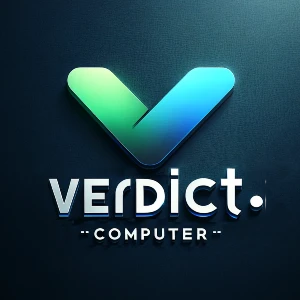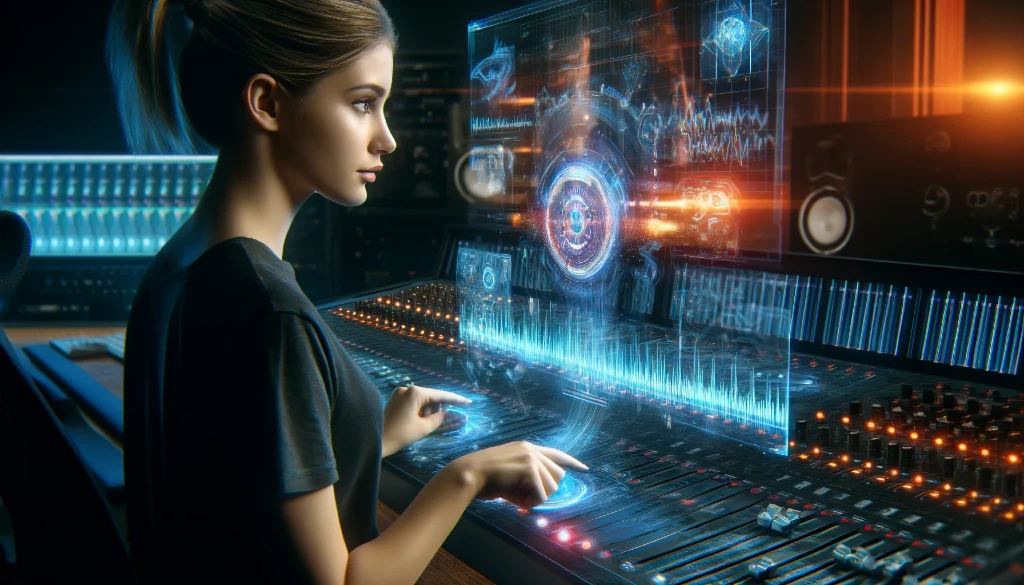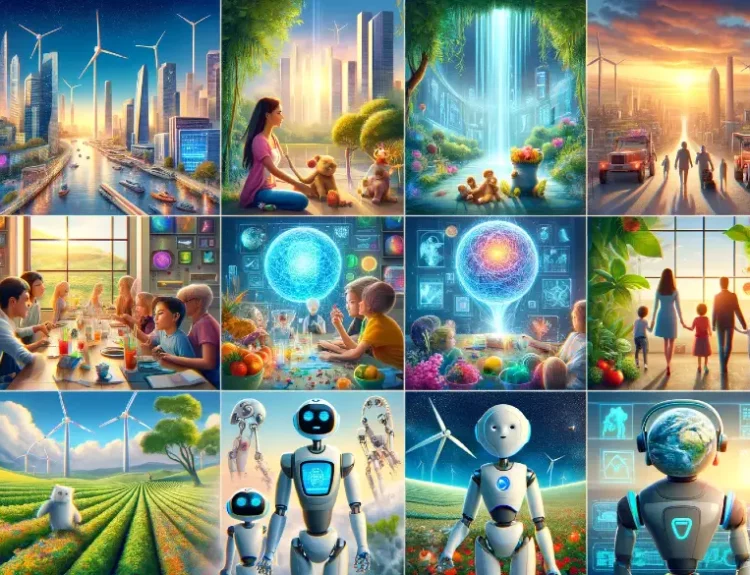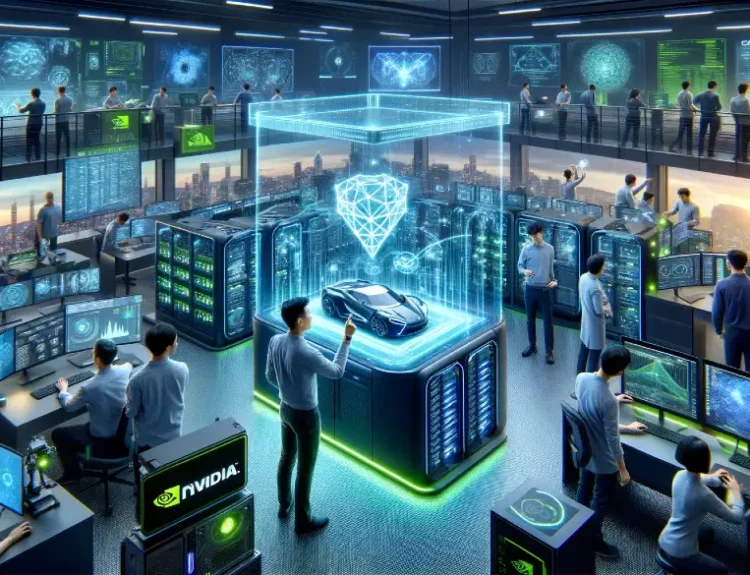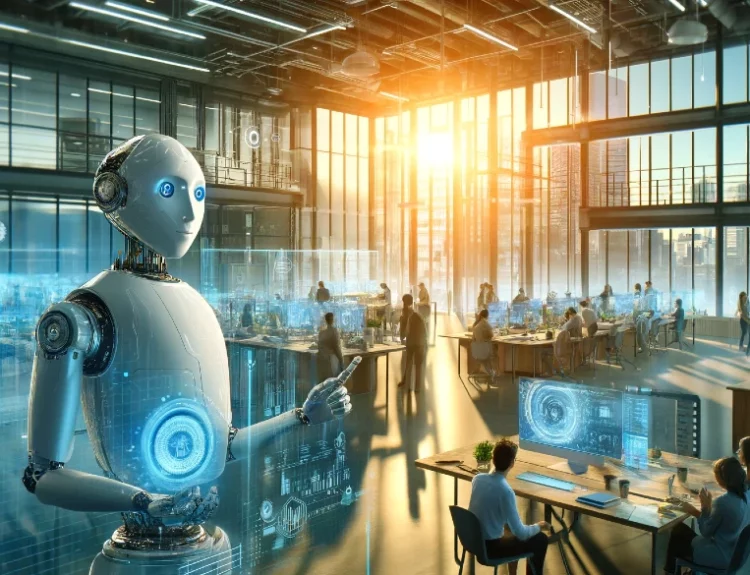Introduction
Imagine a world where technology speaks not in robotic monotone, but with the nuanced inflections and natural flow of human conversation. This captivating reality is no longer science fiction. Artificial intelligence (AI) is rapidly transforming the way computers generate speech, ushering in an era of AI voices that sound eerily human.
Gone are the days of robotic reads. Today’s AI-driven voice technology can synthesize speech with remarkable accuracy, mimicking everything from tone and rhythm to emotional expression. This evolution in intelligent voice generation solutions is driven by advancements in deep learning, a powerful subset of AI that allows machines to learn and improve from vast amounts of data.
This blog post delves into the fascinating realm of AI voices and text-to-speech technology. We’ll explore how AI is revolutionizing computerized speech, its applications in virtual assistants and beyond, and the exciting possibilities that lie ahead for this innovative field. Buckle up, and get ready to discover the speaking intelligence that’s reshaping the way humans interact with technology.
AI’s Expanding Applications
The rise of AI voices isn’t limited to creating friendly chat with your virtual assistant. This powerful technology is weaving itself into the fabric of our daily lives across a diverse spectrum of applications. Let’s explore some of the exciting ways AI is transforming how we interact with information and technology.
A. The Voice Assistant Revolution:
Virtual assistants like Alexa, Siri, and Google Assistant have become ubiquitous, seamlessly integrated into our homes and routines. But the magic behind their ability to understand and respond to our voice commands lies in AI. These assistants leverage intelligent voice generation solutions to interpret natural language and respond in a clear, conversational manner. AI algorithms power their speech recognition capabilities, allowing them to decipher even complex requests and nuances in spoken language.
B. Beyond Assistants: A Symphony of Uses
The applications of AI voices extend far beyond the realm of virtual assistants. Here are a few examples of how this technology is making waves across various industries:
- E-learning and Audiobooks: AI voices can bring textbooks and novels to life, creating engaging and personalized learning experiences for students and audiobook listeners. Imagine a world where learning materials are narrated with different accents or voices to cater to diverse preferences.
- Accessibility Tools for the Visually Impaired: AI text-to-speech technology empowers visually impaired individuals by converting written content into natural-sounding audio. This opens a world of information and entertainment, fostering greater independence and inclusion.
- Content Creation and Marketing: AI voices can be used to create professional-sounding voiceovers for videos, presentations, and marketing materials. This allows businesses and creators to produce high-quality content without the need for expensive recording studios.
- Customer Service Chatbots: AI-powered chatbots equipped with realistic voices can provide 24/7 customer support, answering frequently asked questions and resolving simple issues. This frees up human agents to handle more complex inquiries, improving overall customer service efficiency.
This is just a glimpse into the vast potential of AI voices. As the technology continues to evolve, we can expect even more innovative applications to emerge, transforming how we interact with information and technology in the years to come.
The Science Behind the AI Voice
The captivating realness of AI voices isn’t magic, but rather a complex interplay of cutting-edge science. Let’s delve into the nitty-gritty of how AI understands and translates text into those eerily human-like utterances.
A. Unveiling the AI Algorithms: Masters of Language
At the heart of AI voice technology lies a branch of AI known as Natural Language Processing (NLP). NLP algorithms act as the bridge between human language and machine comprehension. They can analyze the grammatical structure, syntax, and semantics of text, essentially deciphering the meaning behind the words. This understanding is crucial for AI to accurately convert text into natural-sounding speech.
But NLP isn’t the only player in the game. Deep learning algorithms also play a vital role. Deep learning models, trained on massive datasets of human speech, can learn the intricate patterns and nuances of human vocalization. These patterns encompass everything from pronunciation and intonation to rhythm and pauses. By analyzing these elements, deep learning algorithms can generate speech that mimics the natural flow and inflection of human conversation.
B. Building Blocks of Vocal Nuance: Crafting the Melody of Speech
AI doesn’t simply string words together to create speech. It meticulously considers various factors that contribute to natural-sounding vocalization. Here are some key elements AI focuses on:
- Intonation: The rise and fall of pitch in speech, which conveys emotions and emphasis.
- Rhythm: The pacing and flow of speech, which can be fast-paced for excitement or slow and deliberate for emphasis.
- Pauses: Strategic silences that punctuate speech and add natural flow.
- Emphasis: Highlighting specific words or phrases to convey importance.
By taking these elements into account and using them in conjunction with NLP and deep learning, AI can craft speech that is not only grammatically correct but also emotionally nuanced and natural-sounding. This ability to capture the subtle intricacies of human speech is what truly sets AI voices apart from their robotic predecessors.
The Future of AI Voices
The journey of AI voices is far from over. As AI technology continues to evolve at an exponential rate, the future holds exciting possibilities for how computers will speak and interact with us. Here’s a glimpse into what lies ahead:
A. Enhancing User Experience: Tailoring the Voice to You
AI voices have the potential to revolutionize the way we interact with technology by creating a more personalized and intuitive user experience. Imagine virtual assistants that can adapt their speech patterns to your preferences, mimicking a calming tone when you’re stressed or a more energetic voice when you need a pick-me-up (think “enhancing user experience with AI voice interfaces”). AI could even analyze your emotional state through voice patterns and adjust its communication style accordingly. This level of personalization can foster a more natural and engaging interaction between humans and machines.
B. Advanced Technology on the Horizon
The future of AI voices is brimming with possibilities. Advancements in AI technology like voice cloning could allow for the creation of hyper-realistic voices that perfectly replicate a specific speaker. This could have applications in areas like education, where historical figures could be brought to life through recordings narrated in their own voices. Additionally, AI could delve deeper into the realm of emotional expression, creating voices that not only sound human but also convey a wider range of emotions with greater subtlety.
However, with these advancements come ethical considerations. The potential for hyper-realistic AI voices to be misused for deception or manipulation is a concern that needs to be addressed. It’s crucial to develop AI voices responsibly, ensuring they are used for positive purposes that benefit humanity.
The future of AI voices is a symphony of progress, promising a world where technology speaks not just with clarity, but also with empathy and understanding. By harnessing the power of AI responsibly, we can unlock a future where human-computer interaction is more natural, seamless, and enriching than ever before.
Verdict
As we’ve explored, AI voices are rapidly transforming the way computers communicate, blurring the lines between human and machine speech. But the potential of AI extends far beyond replicating human voices. At Verdict, we believe the future of AI lies in its ability to learn, grow, and adapt alongside humanity.
Verdict isn’t just another AI platform. We’re building a future where Machine Learning (ML) and even Artificial General Intelligence (AGI) evolve through real-world interactions and the collective wisdom of our community. Every search, conversation, and shared insight on Verdict contributes to building an AI that understands and grows alongside you. This collaborative effort is the foundation for a future where AI voices are not simply tools, but intelligent partners that reflect our diversity, learn from our experiences, and expand with our collective knowledge.
Imagine an AI voice assistant that can anticipate your needs based on your past interactions, or an AI-powered audiobook narrator that adjusts its tone and pacing to enhance your listening experience. This level of intelligent interaction is what Verdict strives to achieve.
Join us in building a future where AI voices are not merely echoes, but active participants in human dialogue. By leveraging the power of AI responsibly and collaboratively, we can create a world where technology complements and enriches our lives, fostering a future of progress and shared understanding.
Visit Verdict today to learn more about how you can contribute to shaping the future of AI. Want to delve deeper into the exciting world of AI? Head over to our blog page, where you’ll find a treasure trove of insightful articles exploring various aspects of AI. Dive into topics like “AI Smart Glasses” or “AI’s Impact on Computer Chip Manufacturing” – the possibilities are endless!
